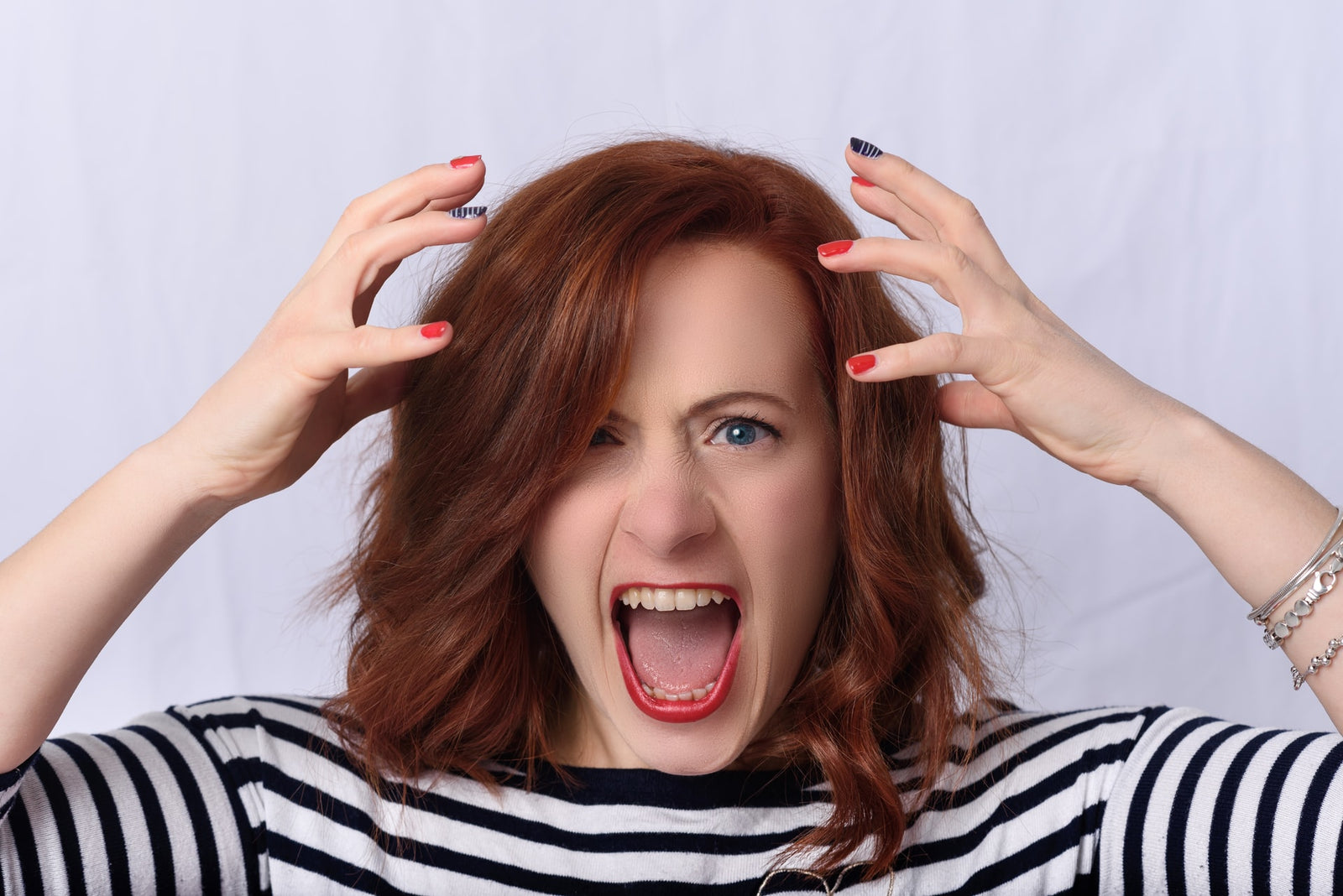If you always find yourself shedding a few strands of hair in bed or after shower, then there’s no cause for panic.
Unless you’re losing more than 50-100 strands of hair or notice that they’re not growing back at all, you’re just going through what most women do. [1]
According to the Cleveland Clinic, hair goes through a natural cycle where it grows really fast and then falls out. This cycle includes three phases: [2]
- Growth phase, which lasts two to seven years;
- Transition phase, which lasts for two weeks; and
- Resting phase, which lasts for three months, ending in shedding.
The is the normal phase. While women aren’t as likely as men to go bald, hair thinning is possible.
And there are a few causes for hair loss, which include genes, stress, hormones, drugs and medication, medical conditions, too much hair treatment, and even diet.
So if you think you’re losing way more than it should, this article will tell you if you’re going bald before it’s too late.
How hair loss starts
If you’re not sure whether it’s just typical shedding or it’s on its way to going a full Britney circa 2007, then here are some signs:
Receding hairline
First thing to observe? Your hairline. This is perhaps the biggest sign of balding. A receding hairline is an outright result of hair not growing back (as fast as it should). Unfortunately, this is often overlooked. Especially when it’s first starting, a receding hairline is hard to confirm. You may start to see some odd changes on your hairline. But you may be unsure whether it’s really receding, or you’re just looking from a different angle. Also, lighting can make things a little tricky. Brighter lighting like fluorescent lights can make your hair look thinner.
Here’s how you’ll know if your hairline is really receding: if you start combing your hair and you notice that the part of your hair, especially close to the hairline, has changed, then it’s likely a red flag. The styling becomes different and your hair just goes a different direction.
Another way to know? Check your Facebook or Instagram photos from two years ago and compare them to your recent ones. Check if there’s a noticeable difference between your hairlines then and now.
And if you’re still unsure, you can monitor by regularly taking photos using the same background, lighting, and angle from your face.
An obvious patch of scalp
If you bow down and check the top of your head, then see a larger than usual patch of the scalp, then it’s a big sign that you may be heading down the Sinead O’Connor road. This shows that you may have lost a good amount of hair and need to consider the likelihood of hair loss. These are bald spots, and if not fixed immediately, then more patches may continue to develop.
Sunburnt scalp
Related to bald spots, you’d know if you’re starting to go bald if you see or feel sunburn on your scalp. When hair thinning happens, there’s less ball of hair to protect your scalp from the sun’s harmful UV rays. You’ll know when you find yourself wearing sunscreen on your head or using more of those beach hats during your glorious tropical holidays.
Itchy head
Scratching your head a little more than you used to? You may as well check if you’re losing a ball of hair too. While not directly linked to hair loss, an itchy scalp may lead to balding exactly because of the actions it prompts you to do – too much scratching, rubbing and brushing. These actions can damage your hair follicles in the long-term and lead to hair loss.
Excessive hair loss
This may sound redundant to this article’s topic but… there’s really no other way to know than when there’s just too much hair on your pillow or sink every day. You’ll know when there’s cause for concern when you feel like hair has stopped growing and you’re seeing either a receding hairline or bald spots on your head.
Stress and anxiety
If you notice the above signs and find yourself just antsy all the time, chances are you’re starting to go through hair loss. Aside from day-to-day stressors from work and personal life, going through a big change, transition, illness or life milestone can be a clear indication of a stress-induced hair loss.
How old you are
Age plays a role in hair loss. According to hair expert Dr. Bessam Farjo, 50% of women will start with thinning hair after the menopause. This is due to the same reasons as men lose their hair, but underlying issues can exacerbate the hair thinning (low Iron, thyroid issues, etc..)”
Meanwhile, 50% of men over 50 will have lost 50% of their hair, according to Dr. Farjo.
Conclusion
While the above signs may sound intense, there’s no need to panic. There are a few ways on how you can prevent and deal with it.
You can start prevention by making sure you’ve got the vitamins, minerals, proteins, herbs, nutrients, and nourishment it desperately needs to grow thicker and maintain vibrant healthy hair in your body. Biotin and collagen are some of the most important nutrients to keep your hair strong and luscious.
If you want biotin and collagen, along with other nutrients to keep your hair strong, then buy the VALI Hair Strong now.
Sources
[1] https://www.healthline.com/health/womens-health/female-pattern-baldness#symptoms
[2] https://health.clevelandclinic.org/hair-loss-in-women-when-should-you-worry/








